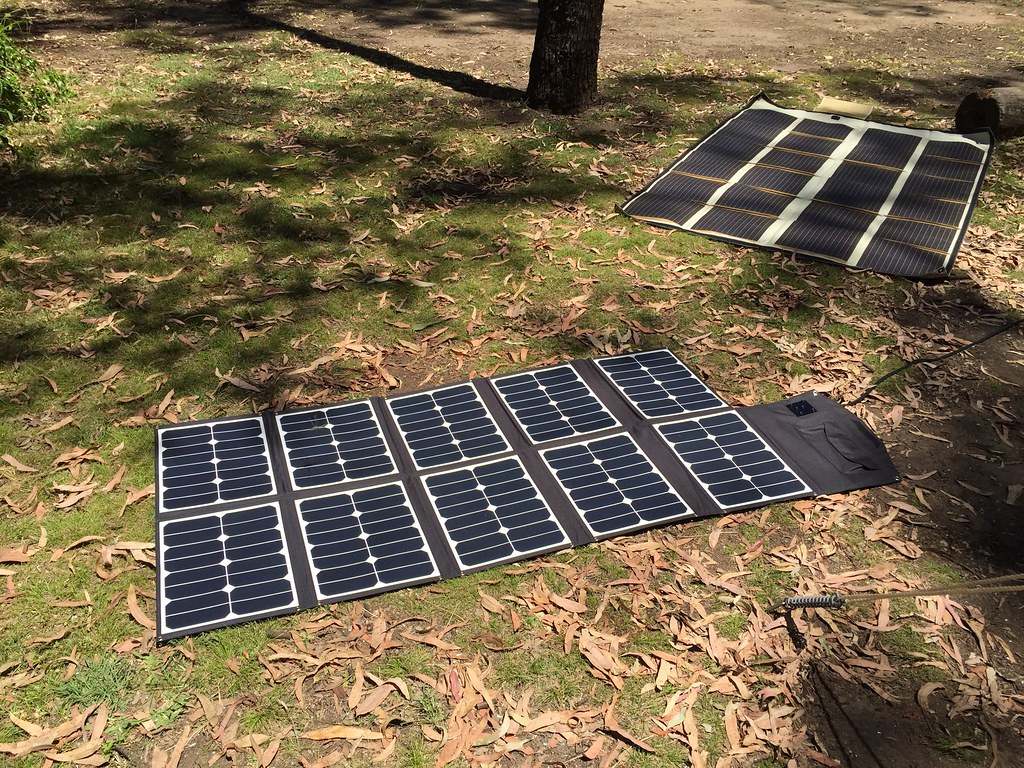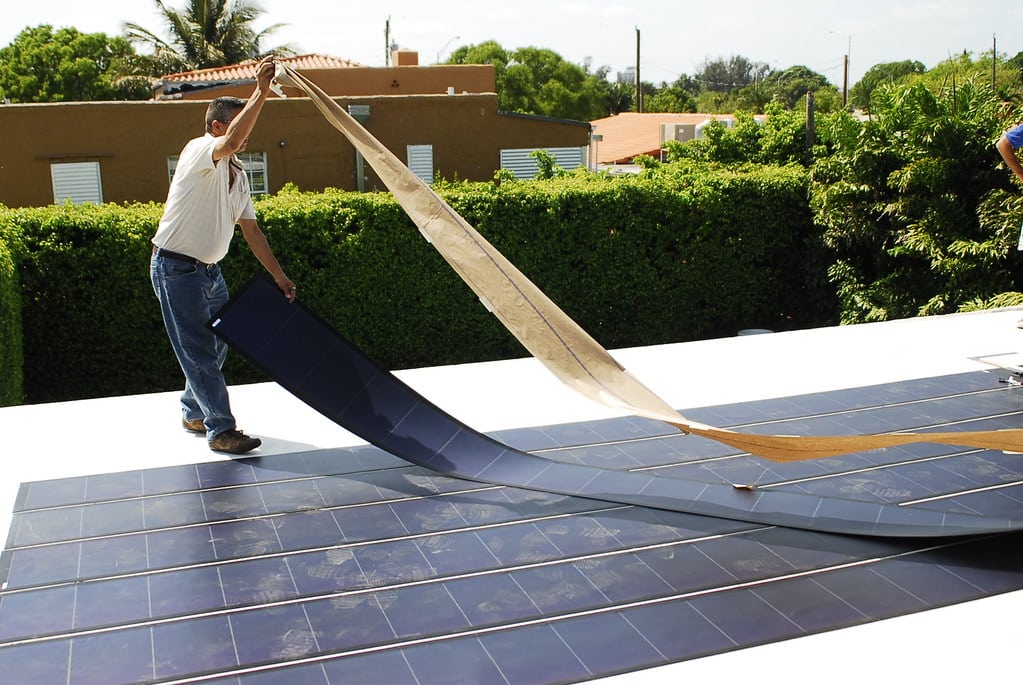Telling the difference between the different types of solar panels isn’t as difficult as you think.
Some of them can be identified easily just by their color. In this article, we will explore the varieties of solar panels to help you better understand the types of solar panels and choose one if you ever fancy getting one for residential or industrial use. But first, let’s look at what a solar panel is.
Solar panels consist of Photovoltaic cells that absorb energy from the sun. Here, the photovoltaic cells convert light from the sun into electricity.
The power from the sun can be used in several ways to power commercial or even residential solar electric systems, telecommunications equipment, and remote sensing.
This article will explore three different types of solar panels: polycrystalline, monocrystalline, and thin-film.
1. Monocrystalline Solar Panel

The monocrystalline solar panel is considered the oldest and most developed among the different types of solar panels.
As the name “Mono” suggests, they are made from single-crystal silicon solar cells.
Monocrystalline Solar panels are considered not only the oldest type of solar panel but also viewed as the most developed.
They are manufactured by forming pure silicon into bars and slicing them thinly into silicon wafers.
These silicon wafers are made into cells and assembled to form a solar panel.
Here, the edges of the cell are cut off (giving it the look of a square with the corners removed).
The cells are then smoothened and rounded, giving the monocrystalline cells a unique outlook.
All of these enable solar cells to generate even more electricity. No wonder the monocrystalline solar panel is considered a premium panel.
How sunlight interacts with the pure silicon used here gives the monocrystalline solar cells a black hue.
Nevertheless, it comes in different colors and designs for black sheets and frames.
This black hue gives it a sophisticated finish, making it an ideal choice in modern times.
The monocrystalline solar cells are very expensive, last longer, and have a higher efficiency rate above 20% compared to other solar panels.
They also occupy less space and are slightly less affected by high temperatures than polycrystalline panels.
2. Polycrystalline Solar Panel
Another name for polycrystalline solar panels is “multi-crystalline” panels; they are considered mid-range and more affordable.
As “Poly” infers many, polycrystalline cells are made from many silicon fragments.
These raw silicon crystals are melted together, and then they are allowed to fragment.
Once it cools down, the fragmented silicon is sliced into polycrystalline solar wafers.
This production method is a faster and cheaper process, unlike manufacturing monocrystalline panels.
Polycrystalline solar panels don’t generate as much electricity from the sun as monocrystalline panels.
This occurs because the electrons encounter restrictions in movement due to the concentration of many crystals per cell.
In terms of appearance, the squares and angles of the polycrystalline panel are uncut.
The solar panels here also have a blue-speckled look because of the high percentage of crystal per cell and the light they give off when the sun shines on them.
The back frames and frames come in silver shades but could also come in different variations.
Compared to the monocrystalline panel, polycrystalline solar panels are a recent development that is becoming popular daily.
Polycrystalline panels are greatly affected by warmer temperatures, which shortens their life span and reduces their efficiency to about 15%.
3. Thin-Film Solar Panel

One of the most recent developments in the world of solar panels is the thin-film solar panel.
This type of solar panel is unlike the different solar panels seen so far.
The thin-film solar panels are not always made of silicon.
In fact, thin-film solar panels can be made from a variety of materials, such as cadmium telluride (CdTe), amorphous silicon ( the A-Si here uses a non-crystalline type of silicon), and Copper Indium Gallium Selenide (CIGS).
The cells of the thin-film solar panels are created by positioning the major material between thin layers of conductive material. After this, a glass sheet is placed on top for protection.
The thin-film solar panel lives up to its name. It is thin in appearance. Depending on the material it is manufactured from, it can give off a blue or black color.
Among the different types of solar panels, the thin-film solar panel requires more roof space to generate more energy. This factor discourages residential owners.
But once residential owners surpass the “space factor,” they look pretty attractive splayed on the roof. They are also pretty flexible and can be easily molded into solar roof tiles.
The thin-film solar panel has a shorter life span than the different solar panels examined so far.
Nevertheless, they are utilized because they are relatively inexpensive and efficient in power generation.
Its efficiency is rated at 11%. Surprisingly, high temperatures do not easily affect them because of their inherent components.
Conclusion
So far, we have seen different types of solar panels. All these different types of solar panels examined come in their unique way.
One of such attributes we’ve seen among the different types of solar panels is efficiency.
Here, we established that monocrystalline panels are the most efficient, followed closely by polycrystalline panels, while the thin film is the least efficient solar panel.
Another difference is in cost, which is responsible for most people’s choice of solar panels.
We also established that thin-film solar panels are the cheapest. At the same time, monocrystalline is seen as the most expensive solar panel.
Other factors examined in this article were temperature coefficients, where we established that the rise in temperature affects solar performance and durability.
Color was another distinguishing factor among the different types of solar panels.
Now that you know the different types of solar panels, go ahead and make your ideal choice.








